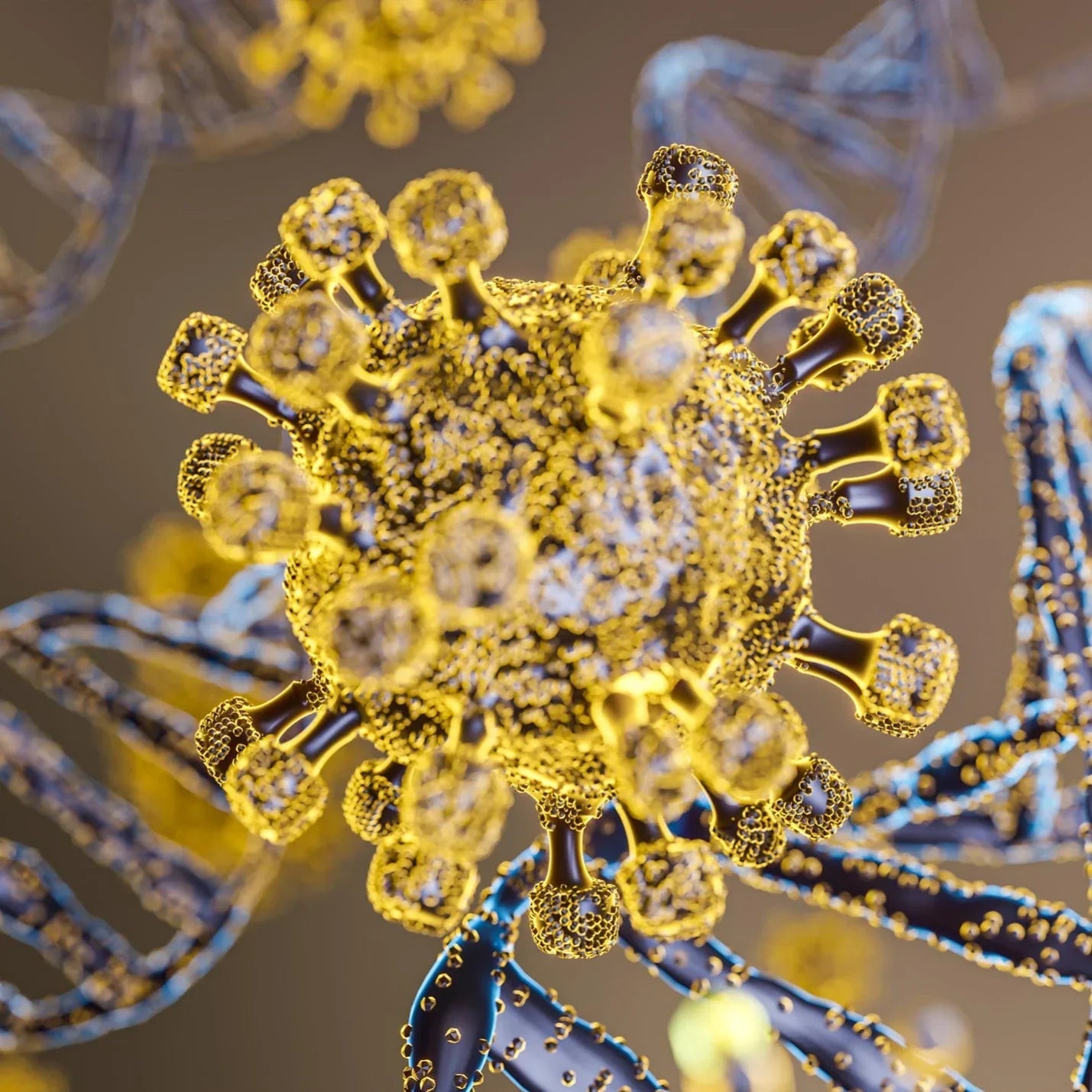Cellular life cycles are governed by sophisticated regulatory mechanisms that determine whether cells proliferate, enter a dormant state, or undergo programmed death. Apoptosis and cellular senescence represent two critical cellular fates with profound implications for development, homeostasis, aging, and disease. While apoptosis leads to the organized dismantling and elimination of cells, senescence involves growth arrest coupled with distinctive metabolic and secretory changes. Understanding these processes has opened new avenues for therapeutic interventions across multiple diseases, particularly cancer and age-related conditions.
Fundamental Mechanisms of Apoptosis
Apoptosis represents a finely orchestrated form of programmed cell death essential for maintaining tissue homeostasis and eliminating damaged or potentially dangerous cells. This process ensures appropriate tissue developmental processes while preventing pathological conditions resulting from deregulated cell death mechanisms1. Unlike necrosis, which involves uncontrolled cell rupture and inflammatory responses, apoptosis is characterized by cell shrinkage, chromatin condensation, DNA fragmentation, and the formation of membrane-bound vesicles called apoptotic bodies that are efficiently cleared by phagocytes without triggering inflammation11.
Apoptotic Signaling Pathways
The execution of apoptosis proceeds through two primary pathways: the extrinsic (death receptor) pathway and the intrinsic (mitochondrial) pathway, with additional involvement of the endoplasmic reticulum stress pathway in certain contexts.
Extrinsic Pathway
The extrinsic pathway is initiated by the binding of death ligands, such as tumor necrosis factor-α (TNF-α), Fas ligand (FasL), or TRAIL, to their corresponding death receptors on the cell surface1. This interaction triggers the formation of the death-inducing signaling complex (DISC), which recruits and activates initiator caspases, particularly caspase-8. Activated caspase-8 subsequently cleaves and activates executioner caspases, such as caspase-3, leading to the systematic dismantling of cellular components and ultimately cell death11. The extrinsic pathway provides a direct mechanism for immune cells to eliminate infected, damaged, or malignant cells, making it a critical component of immune surveillance1.
Intrinsic Pathway
The intrinsic pathway is triggered by internal cellular stressors, including DNA damage, oxidative stress, or growth factor deprivation16. These stimuli perturb the balance between pro-apoptotic and anti-apoptotic members of the Bcl-2 protein family, which regulate mitochondrial membrane integrity. When pro-apoptotic proteins (such as Bax and Bak) predominate, they form pores in the mitochondrial outer membrane, facilitating the release of cytochrome c and other pro-apoptotic factors into the cytosol11. Cytochrome c combines with Apaf-1 and pro-caspase-9 to form the apoptosome, which activates caspase-9 and subsequently the executioner caspases that orchestrate cellular dismantling1.
Endoplasmic Reticulum Pathway
The endoplasmic reticulum (ER) stress pathway represents a third mechanism initiating apoptosis, particularly in response to the accumulation of misfolded proteins30. Prolonged ER stress activates the unfolded protein response (UPR), which, if unable to restore cellular homeostasis, triggers apoptosis through several mechanisms, including calcium release, activation of JNK signaling, and upregulation of pro-apoptotic transcription factors like CHOP35. This pathway is particularly relevant in diseases characterized by proteostasis disruption, such as neurodegenerative disorders and certain cancers35.
Molecular Regulators of Apoptosis
Multiple protein families tightly regulate the apoptotic process, ensuring its appropriate activation while preventing inadvertent cell death.
Bcl-2 Family Proteins
The Bcl-2 family comprises both pro-apoptotic (e.g., Bax, Bak, Bid) and anti-apoptotic (e.g., Bcl-2, Bcl-xL, Mcl-1) members that interact to control mitochondrial membrane permeability3. Anti-apoptotic Bcl-2 proteins inhibit apoptosis by preventing the oligomerization of pro-apoptotic members on the mitochondrial membrane, thereby maintaining membrane integrity and preventing the release of cytochrome c11. Disturbances in the balance between these proteins, such as upregulation of anti-apoptotic Bcl-2 in cancer cells, can lead to pathological resistance to apoptosis1.
Caspases
Caspases are cysteine proteases that exist as inactive zymogens (pro-caspases) until activated through proteolytic cleavage. They are categorized as initiator caspases (caspase-2, -8, -9, -10) or executioner caspases (caspase-3, -6, -7)11. Initiator caspases are activated by death receptor complexes or the apoptosome and subsequently cleave and activate executioner caspases. These executioner caspases then systematically cleave various cellular substrates, including structural proteins, enzymes involved in DNA repair, and inhibitors of DNases, leading to the morphological and biochemical changes characteristic of apoptosis1.
p53 Pathway
The p53 tumor suppressor protein plays a pivotal role in apoptosis regulation, particularly in response to DNA damage or oncogenic stress11. Activated p53 can induce the transcription of pro-apoptotic genes, including those encoding Bax, PUMA, and NOXA, while repressing anti-apoptotic genes like Bcl-21. Additionally, p53 can directly interact with Bcl-2 family proteins at the mitochondria, promoting cytochrome c release independent of its transcriptional activities11. Mutations in the p53 gene, which occur in approximately 50% of human cancers, often result in apoptosis resistance and contribute to therapeutic failures1.
Inhibitors of Apoptosis Proteins (IAPs)
IAPs represent a family of proteins that directly inhibit caspase activity, thereby suppressing apoptosis1. These proteins contain one or more baculoviral IAP repeat (BIR) domains that allow them to bind and inhibit caspases. Additionally, some IAPs possess E3 ubiquitin ligase activity, enabling them to target pro-apoptotic proteins for proteasomal degradation1. Upregulation of IAPs is common in various cancers and contributes to treatment resistance, making these proteins attractive therapeutic targets11.
Cellular senescence represents a state of irreversible cell cycle arrest coupled with distinctive metabolic, morphological, and secretory alterations7. Unlike apoptosis, senescent cells remain viable and metabolically active, potentially influencing surrounding tissues through the secretion of bioactive molecules29. While initially identified as a response to replicative exhaustion, senescence is now recognized as a complex stress response with diverse triggers and multiple physiological and pathological implications4.
Types and Inducers of Cellular Senescence
Cellular senescence manifests through several distinct but overlapping mechanisms, each with specific triggers and molecular characteristics.
Replicative Senescence
Replicative senescence results from telomere shortening after successive cell divisions12. Mammalian telomeres, the repetitive DNA sequences at chromosome ends, shorten with each cell division due to the end-replication problem. When telomeres reach a critical length, they trigger a DNA damage response (DDR) involving ATM/ATR kinases, p53 activation, and p21 induction, ultimately leading to cell cycle arrest12. This mechanism particularly affects dividing somatic cells in renewable tissues and represents an intrinsic aging clock at the cellular level22.
Stress-Induced Premature Senescence
Various stressors, including oxidative damage, genotoxic agents, and mitochondrial dysfunction, can induce premature senescence independent of telomere shortening4. Oxidative stress, characterized by excessive reactive oxygen species (ROS) production, causes DNA damage, protein oxidation, and lipid peroxidation, activating senescence pathways through p53/p21 and p16/Rb axes17. This form of senescence can occur rapidly, without requiring extensive cell divisions, and contributes to tissue aging and various pathologies22.
Oncogene-Induced Senescence
Oncogene-induced senescence (OIS) represents a tumor-suppressive mechanism triggered by oncogene activation or tumor suppressor inactivation27. For instance, expression of oncogenic RAS initially stimulates proliferation but subsequently induces senescence through DNA replication stress, ROS production, and activation of tumor suppressors like p53 and p1627. This mechanism prevents malignant transformation of cells harboring oncogenic mutations, forming a barrier against cancer development in pre-malignant lesions27.
Molecular Pathways Regulating Senescence
The induction and maintenance of senescence involve complex signaling networks centered around two primary pathways: the p53/p21 and p16/Rb axes.
p53/p21 Pathway
The p53/p21 pathway mediates senescence in response to DNA damage, telomere dysfunction, and various cellular stresses32. When activated, p53 induces the expression of p21 (CDKN1A), a cyclin-dependent kinase inhibitor that prevents the phosphorylation of retinoblastoma protein (Rb)22. Hypophosphorylated Rb binds and inhibits E2F transcription factors, preventing the expression of genes required for S-phase entry and cell cycle progression32. While initially reversible, prolonged p21 activation leads to p16 induction and permanent cell cycle arrest32.
p16/Rb Pathway
The p16/Rb pathway operates independently or downstream of p53/p21 to establish and maintain senescence22. The p16INK4a protein, encoded by the CDKN2A locus, inhibits cyclin-dependent kinases 4 and 6 (CDK4/6), preventing Rb phosphorylation and maintaining its inhibitory effect on E2F transcription factors33. Unlike p21-mediated arrest, p16-dependent senescence is typically irreversible and often indicates a more permanent senescent state22. Notably, p16 expression increases with aging in various tissues and serves as a biomarker of senescent cell burden33.
Sirtuins and FoxO Proteins
Sirtuins, particularly SIRT1, and FoxO transcription factors play crucial roles in modulating senescence and longevity18. SIRT1, a NAD+-dependent deacetylase, counteracts senescence by deacetylating and modulating the activities of p53, FoxO proteins, and various histone marks32. Similarly, FoxO transcription factors enhance cellular stress resistance by inducing antioxidant enzymes, DNA repair proteins, and autophagy-related genes32. Age-related decline in SIRT1 and FoxO activities contributes to senescence progression and functional deterioration in various tissues18.
Senescence-Associated Secretory Phenotype (SASP)
A defining feature of senescent cells is their development of a senescence-associated secretory phenotype (SASP), characterized by the secretion of numerous bioactive molecules, including pro-inflammatory cytokines, chemokines, growth factors, and matrix-remodeling enzymes29. The SASP composition varies depending on cell type, senescence inducer, and temporal stage, but typically includes factors like IL-1, IL-6, IL-8, TGF-β, and matrix metalloproteinases34.
The SASP exerts complex effects on tissue microenvironments and organismal health. In certain contexts, it promotes tissue repair, wound healing, and immune surveillance of senescent cells29. However, chronic SASP exposure contributes to sterile inflammation, tissue dysfunction, and various age-related pathologies, including cardiovascular disease, neurodegeneration, and cancer14. The dual nature of the SASP exemplifies the complex and context-dependent roles of senescent cells in physiology and disease29.
Therapeutic Approaches Targeting Apoptosis and Senescence
The intricate understanding of apoptosis and senescence mechanisms has facilitated the development of therapeutic strategies aimed at modulating these processes for disease management. These approaches range from well-established interventions to emerging experimental therapies with varying levels of clinical evidence.
Proven Therapeutic Strategies
Several therapeutic approaches targeting apoptosis and senescence have demonstrated efficacy in preclinical models and clinical trials, offering promising avenues for disease management.
Senolytic Drugs
Senolytics represent a novel drug class that selectively eliminates senescent cells by targeting senescent cell anti-apoptotic pathways (SCAPs)29. The combination of dasatinib (a tyrosine kinase inhibitor) and quercetin (a plant flavonoid) has shown efficacy in eliminating senescent cells and improving physical function in patients with idiopathic pulmonary fibrosis in phase II clinical trials14. Similarly, this combination reduced senescent cell burden in adipose tissue of patients with diabetic kidney disease, demonstrating the translational potential of senolytic therapy29. These findings represent crucial proof-of-concept for senolytic interventions in age-related diseases29.
Fisetin, a natural flavonoid, has also emerged as a promising senolytic agent. Clinical studies have demonstrated that fisetin reduces various systemic senescence indices when compared to baseline measurements, supporting its potential as a geroprotective intervention34. These findings highlight the possibility of developing composite scores for healthy aging assessment based on quantifiable measurements of senescence markers34.
Bcl-2 Family Inhibitors
Targeting anti-apoptotic Bcl-2 family proteins has yielded significant therapeutic successes, particularly in hematological malignancies11. Venetoclax, a selective Bcl-2 inhibitor, has received FDA approval for treating chronic lymphocytic leukemia and acute myeloid leukemia, demonstrating the clinical utility of apoptosis modulation36. Similarly, navitoclax, which inhibits both Bcl-2 and Bcl-xL, has shown promise in clinical trials for various malignancies, albeit with dose-limiting thrombocytopenia due to Bcl-xL inhibition in platelets11. These therapies exemplify the successful translation of apoptosis research into effective clinical interventions36.
Natural Compounds with Anti-apoptotic or Anti-senescence Effects
Numerous natural compounds have demonstrated ability to modulate apoptosis and senescence through multiple mechanisms19. Resveratrol, a polyphenol found in grapes and red wine, inhibits lung cancer proliferation by disrupting the intracellular antioxidant pool, increasing ROS production, and inducing both senescence and apoptosis3. Similarly, curcumin, derived from turmeric, induces apoptosis in colorectal cancer by targeting various molecules and signaling pathways, offering potential complementary approaches to conventional cancer therapies21.
L-Theanine, an amino acid found in tea, delays senescence by regulating cell cycle progression and inhibiting apoptosis, as demonstrated in D-galactose-induced senescent rat intestinal cells13. Additionally, paeonol, a phenolic component extracted from peony bark and root, protects cardiomyocytes by inhibiting oxidative stress, promoting mitochondrial fusion, and regulating mitochondrial autophagy, highlighting its potential in cardiovascular disease management25.
Emerging and Less Proven Approaches
While the following approaches show promise in preclinical settings, they require further validation through rigorous clinical trials to establish their therapeutic efficacy and safety.
MicroRNA-Based Therapies
MicroRNAs have emerged as potential therapeutic targets for modulating senescence and apoptosis24. Recent studies have identified various microRNAs associated with senescence progression, creating opportunities for diagnostic and therapeutic applications24. For example, miR-143-3p promotes ovarian granulosa cell senescence and inhibits estradiol synthesis by targeting specific genes involved in cell proliferation and hormone production23. Similarly, tsRNA-3043a intensifies apoptosis and senescence in ovarian granulosa cells, contributing to premature ovarian failure28. While promising, the clinical translation of microRNA-based therapies faces challenges related to delivery, specificity, and potential off-target effects24.
Senomorphics
Senomorphics represent compounds that modulate the SASP without eliminating senescent cells, potentially alleviating the detrimental effects of senescence while preserving its beneficial functions4. These agents target various pathways regulating SASP production, including NF-κB signaling, p38 MAPK activation, and mTOR activity4. While several compounds, including rapamycin, metformin, and various anti-inflammatory agents, have demonstrated senomorphic properties in preclinical models, their specific efficacy in treating senescence-associated disorders requires further clinical validation4.
Apelin Modulation
Recent research has elucidated the interplay between Apelin (APLN) and reactive oxygen species (ROS) in regulating autophagy and cellular senescence8. Studies demonstrate that APLN overexpression elevates ROS production, accelerating cellular senescence and apoptosis, while APLN silencing enhances autophagy and diminishes cellular aging and apoptosis8. These findings suggest potential therapeutic targets within the ROS and APLN pathways for managing conditions characterized by dysregulated senescence, such as pre-eclampsia8. However, clinical applications of apelin modulation remain largely theoretical, awaiting further validation in human subjects8.
Telomerase Activation
Given the role of telomere shortening in replicative senescence, telomerase activation has been proposed as a strategy to extend cellular lifespan and prevent age-related diseases12. Several compounds, including TA-65 (a telomerase activator derived from Astragalus membranaceus), have shown potential in increasing telomerase activity and telomere length in preclinical models12. However, concerns regarding potential oncogenic risks, limited efficacy in post-mitotic tissues, and insufficient clinical evidence currently restrict the widespread application of telomerase activation therapies12.
Conclusion
Apoptosis and cellular senescence represent fundamental biological processes with profound implications for development, homeostasis, aging, and disease. Apoptosis, operating through extrinsic, intrinsic, and ER stress pathways, ensures the timely elimination of damaged or potentially dangerous cells, while senescence, mediated by telomere shortening, oxidative stress, and oncogenic activation, establishes a state of irreversible growth arrest coupled with distinctive secretory alterations.
The therapeutic modulation of these processes has yielded promising results across various disease contexts. Senolytic drugs, particularly the dasatinib-quercetin combination and fisetin, have demonstrated efficacy in reducing senescent cell burden and improving tissue function in clinical trials. Similarly, apoptosis modulators, such as Bcl-2 family inhibitors, have achieved clinical success in treating hematological malignancies. Natural compounds, including resveratrol, curcumin, and L-theanine, offer additional approaches for modulating apoptosis and senescence through multiple mechanisms.
Emerging strategies, such as microRNA-based therapies, senomorphics, apelin modulation, and telomerase activation, present intriguing possibilities for future interventions, though they require further validation through rigorous clinical trials. As research advances, the selective modulation of apoptosis and senescence pathways holds promise for addressing age-related diseases, cancer, and various degenerative conditions, potentially transforming our approach to these challenging medical problems.
Citations:
- https://www.ncbi.nlm.nih.gov/pmc/articles/PMC6664112/
- https://pubmed.ncbi.nlm.nih.gov/35853997/
- https://pubmed.ncbi.nlm.nih.gov/36866538/
- https://www.ncbi.nlm.nih.gov/pmc/articles/PMC8117359/
- https://pubmed.ncbi.nlm.nih.gov/36658710/
- https://pubmed.ncbi.nlm.nih.gov/34510317/
- https://pubmed.ncbi.nlm.nih.gov/33206947/
- https://pubmed.ncbi.nlm.nih.gov/39714262/
- https://www.semanticscholar.org/paper/662e86bc74a81c22beecd1a2da198d3ce95f3e64
- https://pubmed.ncbi.nlm.nih.gov/39306824/
- https://www.ncbi.nlm.nih.gov/pmc/articles/PMC4925817/
- https://pubmed.ncbi.nlm.nih.gov/30229407/
- https://pubmed.ncbi.nlm.nih.gov/37919877/
- https://pubmed.ncbi.nlm.nih.gov/37880106/
- https://www.ncbi.nlm.nih.gov/pmc/articles/PMC10769968/
- https://pubmed.ncbi.nlm.nih.gov/23543009/
- https://www.ncbi.nlm.nih.gov/pmc/articles/PMC9962998/
- https://www.semanticscholar.org/paper/d992ff525d118e26903d07ae75d50d95c6f43e72
- https://pubmed.ncbi.nlm.nih.gov/38251662/
- https://www.semanticscholar.org/paper/1f83b040b46ba0251bcd28d7272b7e8abe92a659
- https://www.ncbi.nlm.nih.gov/pmc/articles/PMC6566943/
- https://pubmed.ncbi.nlm.nih.gov/33963378/
- https://www.ncbi.nlm.nih.gov/pmc/articles/PMC10454865/
- https://pubmed.ncbi.nlm.nih.gov/38645053/
- https://www.ncbi.nlm.nih.gov/pmc/articles/PMC10387245/
- https://pubmed.ncbi.nlm.nih.gov/8974401/
- https://www.ncbi.nlm.nih.gov/pmc/articles/PMC7067802/
- https://www.ncbi.nlm.nih.gov/pmc/articles/PMC11568010/
- https://www.semanticscholar.org/paper/320510a8846bca386b6eb2c41826912bfa2ecd0c
- https://pubmed.ncbi.nlm.nih.gov/32212466/
- https://www.ncbi.nlm.nih.gov/pmc/articles/PMC4730257/
- https://pubmed.ncbi.nlm.nih.gov/28339038/
- https://www.semanticscholar.org/paper/8380e5595c7532d10ade6b48f0570a24ea8fdcf1
- https://www.ncbi.nlm.nih.gov/pmc/articles/PMC9340993/
- https://www.ncbi.nlm.nih.gov/pmc/articles/PMC9820188/
- https://pubmed.ncbi.nlm.nih.gov/35113355/
- https://www.ncbi.nlm.nih.gov/pmc/articles/PMC10612178/
- https://www.ncbi.nlm.nih.gov/pmc/articles/PMC11482872/
- https://pubmed.ncbi.nlm.nih.gov/33777657/
- https://www.ncbi.nlm.nih.gov/pmc/articles/PMC5855670/
- https://www.ncbi.nlm.nih.gov/pmc/articles/PMC5201115/
- https://www.ncbi.nlm.nih.gov/pmc/articles/PMC5864239/
- https://www.ncbi.nlm.nih.gov/pmc/articles/PMC4933444/
- https://www.semanticscholar.org/paper/4c93b94fae94ccc66b72b6144e2c4d4eeb91c732
- https://pubmed.ncbi.nlm.nih.gov/27908889/
- https://www.semanticscholar.org/paper/9032c0c44e9686dc37ba4ca05bbd62100732749a
- https://www.semanticscholar.org/paper/caf8501d315ec5503563551e5127562c10faf6e9
- https://www.semanticscholar.org/paper/255df742fa0c635cf6c8d09e5df1ad6f3578e564
- https://www.semanticscholar.org/paper/3fc1a3de7877e7820d21ba1fc667284383e156ce








